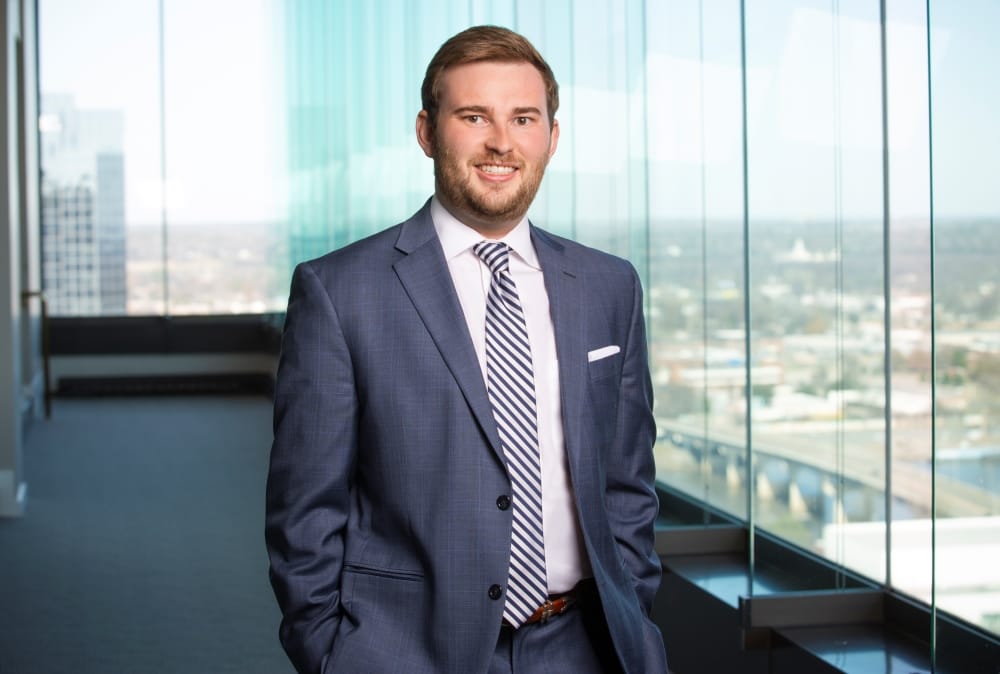
Categories

This resource is provided by WLJ Business Team attorneys Cal Rose, Sidney Leasure and Fred Perkins.
Click here to download the PDF.
The Coronavirus Aid, Relief, and Economic Security Act (“CARES Act”) was signed into law on Friday, March 27, 2020, in response to the Coronavirus (COVID-19) pandemic. The CARES Act makes a number of significant changes to the U.S. federal income taxation of individual taxpayers and businesses under the Internal Revenue Code of 1986, as amended (the “Code”), and provides small businesses with access to much-needed capital in the form of loans, grants and expanded deductibility of certain COVID-19 related expenses. More specifically, Section 1102 of the CARES Act provides for a new Small Business Act (“SBA”) loan program referred to as the “Payroll Protection Program”, which offers forgivable loans to small businesses who use loan proceeds for the payment of payroll, rent, utilities and certain other expenses permitted by the CARES Act. The forgivable portion of the loan is essentially a tax-free grant, which makes the Payroll Protection Program an enticing option for any business affected by COVID-19.
Paycheck Protection Program
The Paycheck Protection Program allocated $349 billion for loans to eligible businesses. These loans are intended to be forgivable if the borrower maintains its employees and otherwise complies with the requirements CARES Act. Of note, an applicant does not need to exhibit financial distress to be eligible for a loan under the Paycheck Protection Program.
Who Can Apply?
The Payroll Protection Program is available to any business with fewer than 500 employees and that was operational before February 15, 2020. Unlike other SBA programs that are limited to for-profit businesses, the Paycheck Protection Program is available to certain nonprofit organizations, but only those organized under Section 501(c)(3) of the Code and “Veteran organizations” organized under Section 501(c)(19) of the Code. For the purposes of determining the 500 employee threshold, applicants should include full-time and part-time employees.
Businesses that don’t qualify under the general standards referenced above may still be eligible for the Paycheck Protection Program if any of the following are true:
- Businesses with more than 500 employees may still be eligible if the business has less than the maximum number of employees specified in the current SBA size standards applicable to its specific industry (Information on SBA Size Standards can be found here: https://www.sba.gov/document/support–table-size-standards);
- Restaurant, Accommodation and Hospitality Businesses – Restaurant and Hospitality businesses with more than one location are eligible as long as the business does not have more than 500 employees at any one location (these are businesses whose NAICS code starts with “72” at the time of the loan disbursement); or
- Certain franchises and recipients of Small Business Investment Company investment with more than 500 employees may be eligible as long as the business does not have more than 500 employees at any one location.
Practical Notes: Sole proprietorships and self-employed individuals are eligible for the Paycheck Protection Program. Non-profit organizations that are not tax-exempt organizations under Section 501(c)(3) or 501(c)(19) of the Code are not eligible.
How Much Can a Business Borrow?
The maximum amount of the loan is set by a statutory formula, which is equal to the product of (A) the average monthly payroll costs incurred during the 1-year period prior to the date of the loan, multiplied by (B) 2.5, subject to a maximum of $10 million.
Example: If the loan is made on April 15, 2020, and the average monthly payroll costs for the period April 15, 2019 through April 15, 2020 equaled $1,000,000, the maximum loan amount would be $2,500,000.
Practical Notes: If a business previously applied for an SBA loan under the Disaster Loan Program, the Paycheck Protection Program loan can also include the outstanding amount of the Disaster Loan Program loan if it is refinanced as part of the Paycheck Protection Program.
How Can Businesses Use Loan Proceeds?
Under Section 1102(d)(1) of the CARES Act, a business can use the loan proceeds during the “covered period” (i.e., the period beginning on February 15, 2020 and ending on June 30, 2020) for the following expenses:
- Payroll costs, including costs related to the continuation of group health care benefits during periods of paid sick, medical or family leave, and insurance premiums;
- Employee salaries, commissions or similar compensation;
- Interest payments on mortgage obligations;
- Rent;
- Utilities; and
- Interest on any other debt obligation incurred prior to February 15, 2020.
Practical Notes: The loan proceeds may not be used to prepay any mortgage obligations or for the payment of principal on mortgage or other debt obligations.
Is the Entire Loan Forgiven?
Not necessarily. Under Section 1106 of the CARES Act, only certain costs incurred and payments made during the eight-week period following the date of the loan are eligible for forgiveness. Eligible costs during this eight-week period (“Total Forgivable Costs”) include the following:
- Payroll Costs
- Interest payments on mortgage obligations (not including prepayments or payments of principal);
- Rent paid pursuant to a leasing agreement in existence before February 15, 2020;
- Utility costs paid for electricity, gas, water, transportation, telephone or internet access for which service began prior to February 15, 2020.
For purposes of loan forgiveness, “Payroll Costs” include employee salary, wages and commissions; payment of cash tips; payment of vacation; parental, family, medical or sick-leave; allowance for dismissal or separation; payment required for group health benefits (including insurance premiums); payment of retirement benefits; or payment of state or local tax assessed on employee compensation; and sole proprietor income or independent contractor compensation not in excess of $100,000 (pro-rated for the applicable period). Eligible payroll costs do not include employee compensation above $100,000 (pro-rated for the applicable period), federal employment taxes imposed or withheld taxes; compensation to an employee whose principal residence is outside of the U.S.
Limitations on Forgiveness – The Payroll Protection Program places several limitations on the amount of the loan that can be forgiven. As a starting point, the Total Forgivable Costs can’t exceed the principal amount of the loan. Additionally, the Total Forgivable Costs are reduced by a statutory formula if the business fails to employ its normal workforce of full-time employees (“FTEs”) during the eight-week period. This formula is calculated as follows:
| Total Forgivable Costs X | ( | Average # of FTEs during 8-week period | ) |
| Historical Average # of FTEs |
The “Historical” number of FTEs can be calculated, at the option of the borrower, as either (i) the average number of FTEs per month during the period of February 15, 2019 through June 30, 2019; or (ii) the average number of FTEs per month during the period of January 1, 2020 through February 29, 2020.
The proportional reduction to the Total Forgivable Costs also applies to reductions in the pay of any employee where the pay reduction exceeds 25% of the employee’s prior year compensation. A borrower will not be penalized by a reduction in the amount forgiven for termination of an employee made between February 15, 2020 and April 26, 2020, as long as the employee is rehired by June 30, 2020.
Any amount of the loan outstanding after considering the amount forgiven will be repayable over a term not to exceed 10 years.
Does Forgiveness Happen Automatically?
No. The borrower must apply to the lender for loan forgiveness with supporting documentation. Accordingly, borrowers must practice detailed accounting and maintain complete and accurate recordkeeping in order to take advantage of these provisions.
What Else Should I Know?
The maximum interest rate for these loans is capped at 4%, and there are no prepayment penalties. The amount of the loan forgiven is not considered taxable income or “cancellation of indebtedness” income to the borrower under the Code.
Loans are non-recourse to the borrower, meaning that no collateral or personal guarantees are required. In addition to waiving any guaranty that might otherwise be required by the Small Business Act, the CARES Act specifically provides each loan is nonrecourse to the shareholders, members and partners of the borrower.
The borrower does not have to demonstrate it was unable to secure financing elsewhere before qualifying for SBA financing. However, each applicant is required to certify to its lender as follows:
- Current uncertain economic times make the loan request necessary to support ongoing operations; and
- Funds will be used to retain workers and make payroll, mortgage payments, lease payments and utility payments; and
- Applicant does not already have an application pending for other payroll assistance under the CARES Act.
A loan under the Paycheck Protection Program makes the borrower ineligible for the Employee Retention Tax Credit made available under the CARES Act. This only applies to the Employee Retention Tax Credit in the CARES Act and does not apply to any credits available under the FFCRA (such as the paid sick leave tax credit) or other credits available under the CARES Act.
When Can Businesses Apply?
Businesses looking to take advantage of the Payroll Protection Program should begin the communication process with their lender immediately. The SBA has until April 26, 2020 to issue regulations implementing and providing guidance under certain provisions of the CARES Act. Issuance of regulations and guidance may delay loan approval and disbursement or modify certain loan requirements.
This memorandum is provided by Wright, Lindsey & Jennings, LLP for educational and informational purposes only and is not intended and should not be construed as legal advice. Businesses and individuals with additional questions should contact Cal Rose, Sidney Leasure, Fred Perkins, or any other WLJ Business attorney.








































































